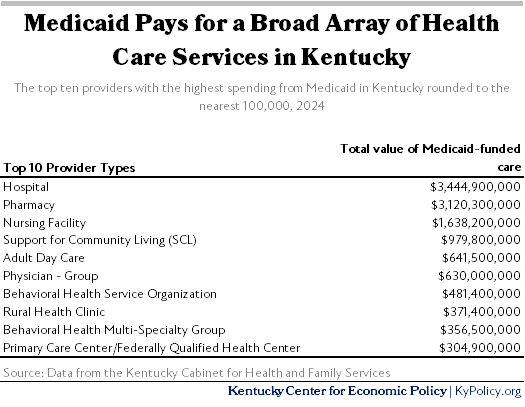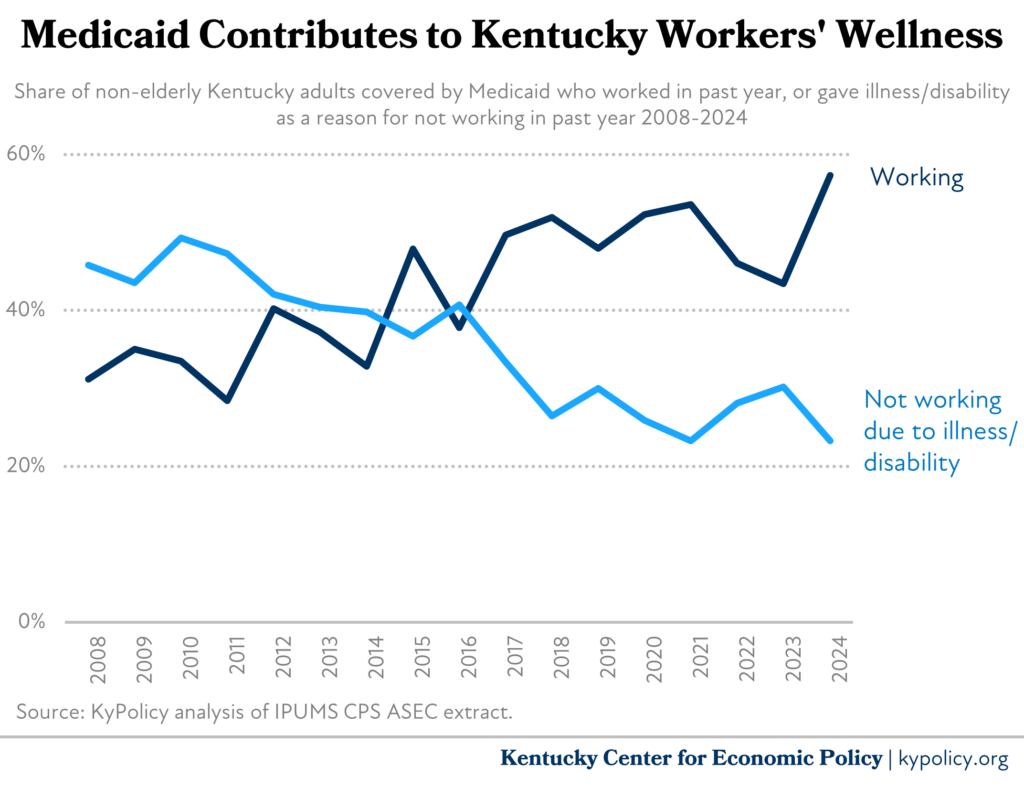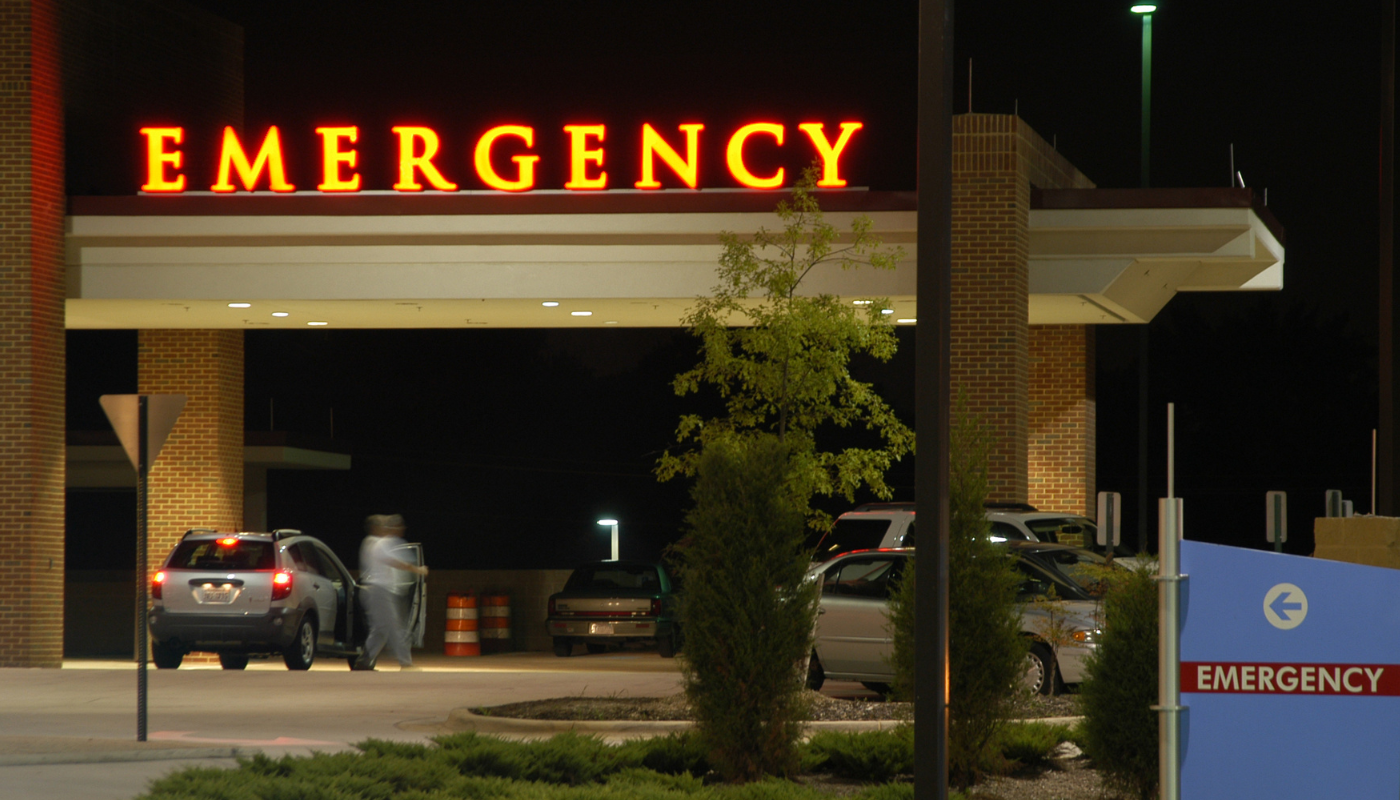Medicaid plays a central role in the health care of one in three Kentuckians, but it’s also crucial to our economy. Through billions in combined state and federal spending on health care, vast portions of the economy are supported by Medicaid, including hundreds of thousands of jobs. Additionally, many working Kentuckians receive medical care because of Medicaid, which helps them stay healthy and in the labor force.
The economic and health benefits of Medicaid are at risk due to proposed cuts in Congress, however. While the cuts are aimed at offsetting just a portion of the cost of extending large tax cuts that primarily benefit wealthy individuals, the economic harm of a diminished Medicaid program would ripple throughout the economy, eliminating jobs and reducing access to health care in every corner of the commonwealth.
Medicaid pours federal funds into local economies throughout Kentucky
In 2026, Medicaid spending will total $20 billion in Kentucky, $15.5 billion of which will be federal funds. The vast majority of those funds will be spent directly on medical care in local economies across the commonwealth. As health care providers receive those funds, they are able to pay staff, contractors, and vendors, which use or spend much of that money within their own communities, further spurring economic activity. It is critical, then, to understand Medicaid not only as a driver of improved health, but as a key supporter of jobs, wages, and various sectors of the economy.
The distribution of Medicaid spending is not equal across the state. Health care providers in eastern Kentucky’s 5th congressional district receive the most Medicaid spending as a share of its economy than any other district. This fact is in part because eastern Kentucky has the largest number of Medicaid enrollees in the state, many of whom are seeking care within their communities rather than just traveling to Lexington or some other urban center for care. Medicaid spending in the 5th District is equal to 13.5% of its real GDP, meaning as many as one in seven dollars-worth of goods and services produced in eastern Kentucky derive from Medicaid spending . Oher districts’ Medicaid spending on care ranges from 3.1% to 6% of real GDP.
While a small portion of Medicaid spending is used for administration on the state level, and for the overhead of Managed Care Organizations (MCOs) that implement Medicaid coverage on behalf of the state, the vast majority of Medicaid spending goes directly to medical care and medicine. Hospitals, pharmacies and nursing homes account for a little over half of all payments to in-state providers, with behavioral health, primary care, and services for the elderly and disabled comprising the rest of the top-ten provider types.

For a full list of provider types by county, see table at the end of this analysis.
When payments are made to providers, they are used for medical supplies, investments in facilities/services and salaries. In each of these cases, funds continue to circulate in local economies as health care providers pay contractors, use increased revenue to leverage financing that they pay interest on, attract additional providers to the region to supplement the services offered, and as employees use their paychecks on housing, groceries, cars, and other daily needs. This “multiplier effect” of Medicaid is a significant economic generator and has a particularly potent effect during economic downturns. For example, a study of what expanding Medicaid eligibility would mean for Missouri’s economy suggested that on average, every $1 spent on Medicaid would yield $1.88 in economic activity, a slight majority of which would occur outside the health care sector. Another study about Medicaid’s economic role in the wake of the Great Recession showed that the worse the economic conditions are, the more jobs Medicaid creates through its spending on healthcare. The strong effect Medicaid has on the economy during downturns has led the key congressional advisory committee on Medicaid to recommend automatic increases in federal Medicaid spending during recessions to maximize this benefit.
According to one estimate, the proposed $880 billion federal budget cut to Medicaid currently being considered in Congress would lead to 13,000 lost jobs in the health care sector in Kentucky, and an additional 11,500 jobs lost in other sectors due to the multiplier effect of Medicaid.
Medicaid supports Kentucky workers
While more than half of Kentucky adults covered by Medicaid are working, the vast majority of the remainder are ill or disabled or actively engaged in their community in some other way. Because illness and disability are the leading reason among non-working, non-elderly adults for not being on the job, Medicaid plays a central role in helping people get well enough to work.
Prior to the expansion of Medicaid eligibility to all Kentuckians below a certain income, 46% of low-wage workers were uninsured according to census data, which meant that they were unlikely to be receiving medical care for conditions that either were or could prevent them from working. But as of 2023, just 11% of low-wage workers in Kentucky are uninsured. Medicaid expansion has been critical to treating chronic conditions, providing SUD treatment, detecting conditions like cancer while it is still treatable and providing needed assistance like glasses and hearing aids. For this reason, as well as a tightening labor market, an increasing share and number of non-elderly adults covered by Medicaid have been working since Medicaid expansion began in Kentucky.
Additionally, since Kentucky expanded Medicaid eligibility, having an illness or disability has fallen as a reason for being out of the workforce among non-elderly adults covered by Medicaid– from 40% in 2013 to 23% in 2024. While this correlation does not prove that Medicaid made people well enough to work, all other categories of reasons why Medicaid-covered, non-elderly adults were not working remained stable since Medicaid expansion took effect.

The significant cuts currently proposed in the Congressional budget resolution could lead to an annual federal cut to Medicaid of $1.9 billion per-year in Kentucky. While much attention has duly been placed on the harm this would inflict on the Kentuckians who receive their care through Medicaid, it is clear that the economy and workforce would be severely damaged as well. See below for Medicaid spending by county and by provider type in Kentucky.




